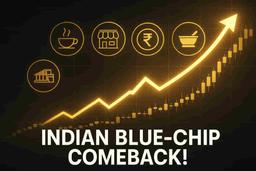India's Inflation Hits Record Low: Food Prices Crash, Gold Soars! What's Next for Your Money?
Economy
|
Updated on 12 Nov 2025, 12:07 pm
Reviewed By
Satyam Jha | Whalesbook News Team
Short Description:

▶
Detailed Coverage:
India's Consumer Price Index (CPI) inflation reached an all-time low of 0.25% in October. This significant cooling is primarily attributed to a 5% year-on-year decline in food inflation, marking the second consecutive month of falling food prices. Vegetable prices experienced a sharp decrease of 27.6%, the most substantial drop recorded in over a decade. Cereal inflation softened to 0.9%, and pulses fell by 16.1%, indicating abundant supply from the kharif harvest. The correction in oils and fats also contributed to easing food costs.
However, not all categories saw prices fall. Core inflation, which excludes food and energy, remained stable. Housing inflation was recorded at 2.96%, health at 3.86%, and education at 3.49%. Notably, personal care and effects inflation surged to 23.9%, its highest point since the pandemic, largely due to strong price increases in gold (up 57.8%) and silver (up 62.4%). Transport and communication inflation saw a dip to 0.94%.
Regionally, price growth varied. Kerala recorded the highest inflation at 8.6%, followed by Jammu & Kashmir (3%) and Karnataka (2.3%). Conversely, Bihar, Uttar Pradesh, and Madhya Pradesh experienced deflation, with inflation rates of -2%, -1.7%, and -1.6% respectively, mainly due to sharp declines in food prices.
Impact: This sharp decline in inflation could influence the Reserve Bank of India's monetary policy decisions, potentially paving the way for interest rate cuts if the trend persists. Lower inflation increases the purchasing power of consumers, which can boost demand. However, rising gold and silver prices might impact discretionary spending in specific segments.
Difficult Terms: * Inflation: A general increase in prices and fall in the purchasing value of money. * Deflationary streak: A period during which the general price level of goods and services is falling. * Year-on-year: A comparison of data from a given period with the data from the same period in the previous year. * Kharif: The summer or monsoon crop, planted at the beginning of the monsoon season (around June) and harvested in autumn (around October). * Core inflation: The inflation rate calculated excluding the volatile components of food and energy. * Commodities: Raw materials or primary agricultural products that can be bought and sold, such as gold, silver, oils, and grains.
Stock Investment Ideas Sector

Market SURGES Back! Expert Reveals 3 Must-Buy Stocks for BIG Gains Today!

Bored With Market Slumps? These Blue-Chip Giants Are Quietly Gearing Up For A Huge 2026 Comeback!

November's Top Stock Buys Revealed! Experts Share 9 Must-Watch Stocks with Stunning Target Prices – Are You In?

DIIs Unleash ₹1.64 Lakh Crore On Indian Stocks! Top Picks Revealed Amidst FII Exit - What's Next?

Explosive Market Debut! Top Stocks Soar, IPO Frenzy Grips India!

IPO BOOM WARNING! Smart Investors Reveal Why Your Money Could Vanish Fast!

Market SURGES Back! Expert Reveals 3 Must-Buy Stocks for BIG Gains Today!

Bored With Market Slumps? These Blue-Chip Giants Are Quietly Gearing Up For A Huge 2026 Comeback!

November's Top Stock Buys Revealed! Experts Share 9 Must-Watch Stocks with Stunning Target Prices – Are You In?

DIIs Unleash ₹1.64 Lakh Crore On Indian Stocks! Top Picks Revealed Amidst FII Exit - What's Next?

Explosive Market Debut! Top Stocks Soar, IPO Frenzy Grips India!

IPO BOOM WARNING! Smart Investors Reveal Why Your Money Could Vanish Fast!
SEBI/Exchange Sector

SEBI's BIG Plan to Revamp Stock Lending! Are High Costs Killing This Trading Tool? 🚀

BSE Ltd. Q2 Earnings EXPLODE Past Expectations! Is This The Next Big Stock Surge?

SEBI's BIG Plan to Revamp Stock Lending! Are High Costs Killing This Trading Tool? 🚀
